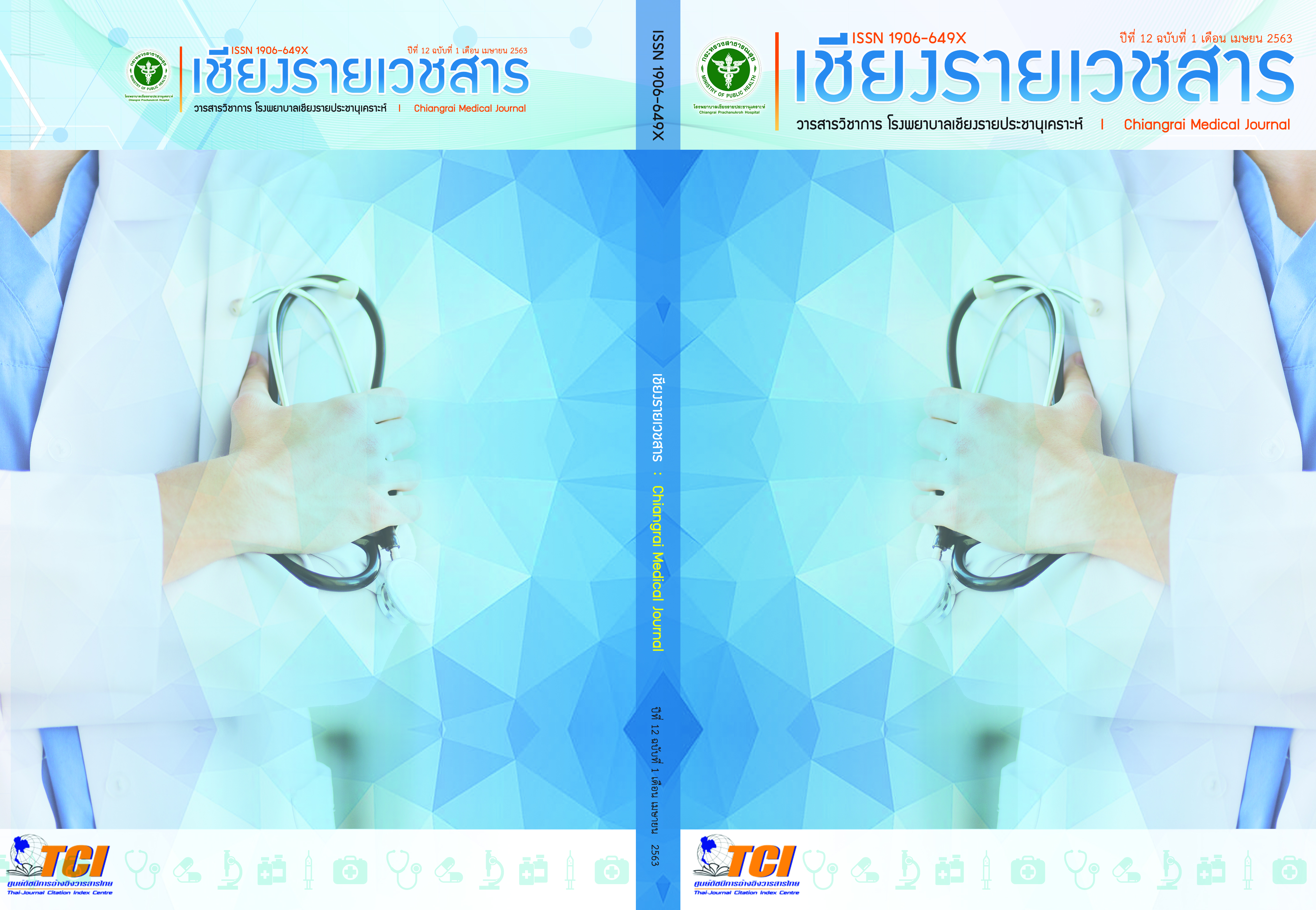Factors associated with the severity of injured patients and epidemiology of mass casualty traffic incidents in Lampang, Thailand
Main Article Content
Abstract
Title: Factors associated with the severity of injured patients and epidemiology of mass casualty traffic incidents in Lampang, Thailand
Background: To effectively reduce the burden of Mass Casualty Incidents (MCIs) from road traffic injuries, preparedness and prevention should be based on MCIs’ characteristics and factors associated with the severity.
Methods: Extracted the record of all traffic MCIs that involved three or more casualties in Lampang between Jan 1, 2012 - Dec 31, 2019. Compared characteristics by severity: expectant, immediate, urgent, and delayed respectively. The factors of severity are investigated using a multilevel ordered logistic regression model.
Results: Ninety-six incidents and six hundred and sixty-one casualties were identified from mass casualty traffic incidents. Number of expectants, immediate, urgent, and delayed casualties were 56 (8.5%), 96 (14.5%), 249 (37.7%) and 260 (39.3%) respectively. Most casualties were male (n=344, 52%). There were five factors associated the severity of casualties were age more than forty-five years old (OR†, 2.77; 95% CI, 1.66-4.65; p<0.001), occur in night shift (OR†, 3.36; 95% CI, 1.22-9.30; p=0.019), pickup trucks (OR†, 2.15; 95% CI, , 1.01-4.59; p= 0.047), northern zone (OR†, 3.41; 95% CI, 0.86-13.44; p=0.080) and holiday (OR†, 2.07; 95% CI, 0.95-4.47; p=0.065).
Conclusion: Drivers should be aware of these conditions and drive carefully if involved these conditions while driving.
Article Details
References
2. American Medical Association, National Disaster Life Support Foundation. (2007). All-hazards course overview and disaster paradigm. In: Dallas CE, Coule PL, James JJ, editors. Basic disaster life support TM provider manual version 2.6. New York: Lippincott, 2007. p.1-27.
3. American Medical association, American Public Health Association. Improving health system preparedness for terrorism and mass casualty events [Internet]. n.p.: n.p.; 2007. [cited 2019 Dec 24]. Available from: file:///C:/Users/Admin/Downloads/cdc_6891_DS1%20(7).pdf
4. Lennquist S. Education and training in disaster medicine. Scand J Sur. 2005;94(4):300–10.
5. Branas CC, Sing RF, Perron AD. A case series analysis of mass casualty incidents. Prehosp Emerg Care. 2000;4(4):299–304.
6. Eastman AL, Rinnert KJ, Nemeth IR, Fowler RL, Minei JP. Alternate site surge capacity in times of public health disaster maintains trauma center and emergency department integrity: Hurricane Katrina. J Trauma. 2007;63(2):253–7.
7. Irvin CB, Atas JG. Management of evacuee surge from a disaster area: solutions to avoid non-emergent, emergency department visits. Prehosp Disaster Med. 2007;22(3):220–3.
8. Sloan HM. Responding to a multiple-casualty incident: room for improvement. J Emerg Nurs. 2011;37(5):484–6.
9. Clarkson L, Williams M. EMS, Mass Casualty Triage. [Updated 2019 Feb 25]. In: StatPearls [Internet]. Treasure Island (FL): StatPearls Publishing; 2019 Jan. Available from: http://www.ncbi.nlm.nih.gov/books/NBK459369/
10. World Health Organization. Mass casualty management: systems strategies and guidelines for building health sector capacity. Geneva: WHO, 2007.
11. Castro Delgado R, Naves Gómez C, Cuartas Álvarez T, Arcos González P. An epidemiological approach to mass casualty incidents in the Principality of Asturias (Spain). Scand J Trauma Resusc Emerg Med. 2016; 24:18.
12. Shah MN, Cushman JT, Davis CO, Bazarian JJ, Auinger P, Friedman B. The epidemiology of emergency medical services uses by children: an analysis of the National Hospital Ambulatory Medical Care Survey. Prehosp Emerg Care. 2008;12(3):269–76.
13. Schenk E, Wijetunge G, Mann NC, Lerner EB, Longthorne A, Dawson D. Epidemiology of mass casualty incidents in the United States. Prehosp Emerg Care. 2014;18(3):408–16.
14. World Health Organization. World report on road traffic injury prevention [Internet]. Geneva:WHO; 2004 [Cited 2019 Nov,25 ]. Available from: https://www.who.int/violence_injury_prevention/publications/road_traffic/world_report/en/

